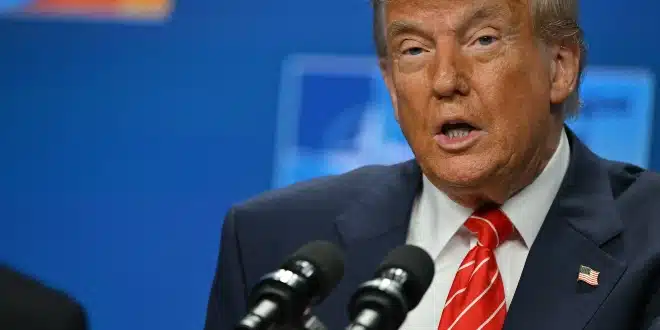Efforts to stabilize the fragile truce between Israel and Iran entered a second day on Wednesday, following nearly two weeks of intense cross-border conflict that drew in global powers and severely escalated nuclear concerns. The cessation of hostilities has raised the prospect of diplomatic engagement, with indications from the United States that direct talks may take place in the coming week.
U.S. President Donald Trump, speaking from the NATO summit in Brussels, stated that while he was not actively seeking renewed negotiations, communication channels with Tehran remain open. According to Trump, the recent military strikes carried out by the U.S. had rendered Iran’s nuclear infrastructure inoperable. However, Iranian authorities have yet to confirm any upcoming talks.
Nuclear Oversight and Political Fallout
The ceasefire emerged after 12 days of military action that included U.S. and Israeli airstrikes on three Iranian nuclear sites. These strikes were described by American officials as comprehensive, aimed at eliminating Iran’s enrichment capabilities. Iran’s Foreign Ministry has acknowledged substantial damage, while refraining from revealing detailed assessments of the impact.
Despite the ongoing truce, tensions remain high over the future of Iran’s nuclear program. Iran’s parliament recently approved fast-tracking legislation that would suspend cooperation with the International Atomic Energy Agency (IAEA). The bill, introduced in response to perceived IAEA inaction following the strikes, is set to temporarily halt inspections at Iranian facilities until guarantees for site security are established.
Mohammad Bagher Qalibaf, the parliament speaker, criticized the international watchdog for what he described as its failure to condemn attacks on sovereign infrastructure. He stated that Iran would continue advancing its nuclear program, though official statements have reiterated the country’s intent to remain within the framework of peaceful development.
IAEA Director General Rafael Grossi has responded with urgency, indicating that inspectors must return to Iran promptly to evaluate the status of enriched uranium stockpiles. Grossi emphasized that, under the Non-Proliferation Treaty, Iran is legally obligated to cooperate with international inspection protocols. He underscored the need for transparent access now that active conflict has ceased.
Meanwhile, President Emmanuel Macron of France expressed optimism that Tehran might rejoin the negotiating table. Macron has maintained regular contact with Iranian President Masoud Pezeshkian throughout the conflict, advocating for a diplomatic resolution rooted in the 2015 nuclear agreement framework.
Disputes Over the Damage and Future of Talks
Conflicting assessments have emerged regarding the long-term effect of the strikes. Israeli defense authorities claimed that Iran’s capacity to develop nuclear weapons had been significantly reduced, potentially delayed by several years. The U.S. echoed this assessment publicly, although some intelligence sources privately estimated the setback to be limited to a few months.
Trump dismissed the latter claims, insisting that rebuilding efforts would take far longer. His special envoy to the Middle East, Steve Witkoff, reinforced the administration’s view, stating that the campaign had achieved its core objective by dismantling Iran’s enrichment capability.
Iran’s spokesperson Esmail Baghaei admitted the installations suffered major damage but stopped short of confirming whether cooperation with the IAEA would be permanently severed. He affirmed that Iran would continue its nuclear energy program and defended its right to develop peaceful nuclear technology.
Intelligence Operations and Civilian Impact
In a rare public disclosure, Israel’s intelligence agency Mossad released a video detailing operations that allegedly enabled its forces to target high-level Iranian personnel and strategic sites. Mossad Director David Barnea credited international partnerships and technological capabilities for the successful execution of covert missions deep inside Iran.
The video’s release marked a departure from the agency’s traditionally low profile, signaling a shift in how intelligence achievements are presented during wartime. Israel’s military chief of staff also revealed that commandos were deployed behind enemy lines to assist air operations and reduce missile threats.
The human cost of the conflict has been substantial. Iranian officials reported 606 fatalities and over 5,000 injuries. An independent monitoring group based in Washington, which has tracked prior episodes of civil unrest, put the death toll significantly higher, estimating over 1,000 deaths, including hundreds of civilians and security personnel.
On the Israeli side, at least 28 people were killed, with more than 1,000 injured in missile strikes and related incidents.


